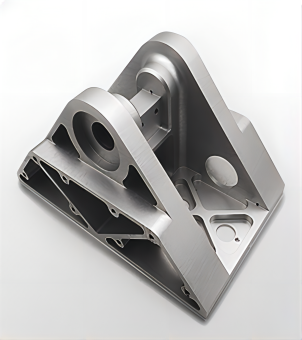

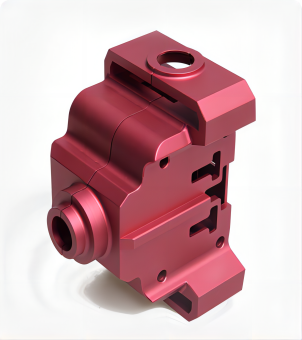
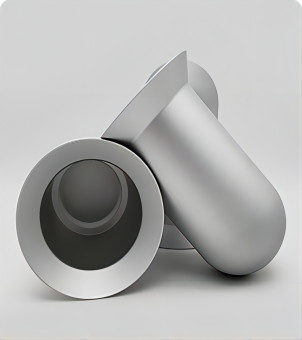
| aluminum alloy material | Aluminum alloy-6061 | Aluminum alloy-5052 | Aluminum alloy-2A12 | Aluminum alloy-7075 | - | - | - | - |
| Stainless steel | Stainless steel-303 | Stainless steel-304 | Stainless steel-316 | Stainless steel-316L | Stainless steel-420 | Stainless steel-430 | Stainless steel-17-4PH | Stainless steel-301 |
| Stainless steel-321 | - | - | - | - | - | - | - | |
| Alloy steel | Q235 (A3 steel) | 45 steel | Cr12 | 3CR13 | GCr15 | 40Cr | Spring Steel-65Mn | Die steel-SKD11 |
| Copper alloy | Brass-H59 | Brass-H62 | Copper-T2 | Oxygen-free copper TU2 | Tin Bronze-QSn-6-6-3 | Beryllium copper-C17200 | - | - |
| Other alloys | Electrical pure iron-DT4C | Electrical pure iron-DT4E | Titanium alloy-TC4 | Magnesium alloy-AZ91D | - | - | - | - |
| Plastic | Engineering Plastics-ABS | Polytetrafluoroethylene-PTFE | Saigang-POM | Bakelite | Plexiglass-PMMA | Polypropylene-PP | Polyphenylene sulfide-PPS | Polyurethane-PU (Youli glue) |
| Polyvinyl chloride-PVC | Epoxy plate FR4 | Polyethylene-HDPE | Polyethylene-LDPE | Nylon-PA6 | Nylon-PA66 | Polycarbonate-PC | Polyetheretherketone-PEEK | |
| Special materials and others | - | - | - | - | - | - | - | - |
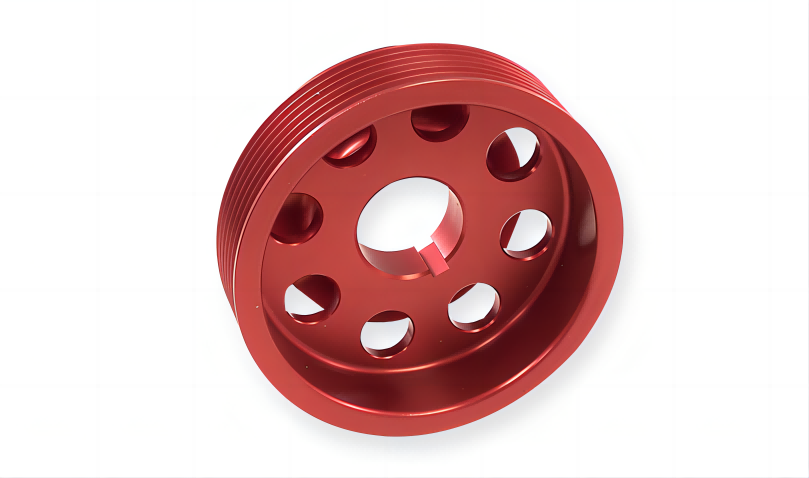
Applicable materials:
Aluminum alloy-6061
Aluminum alloy-5052
Aluminum alloy-7075
Aluminum alloy-2A12
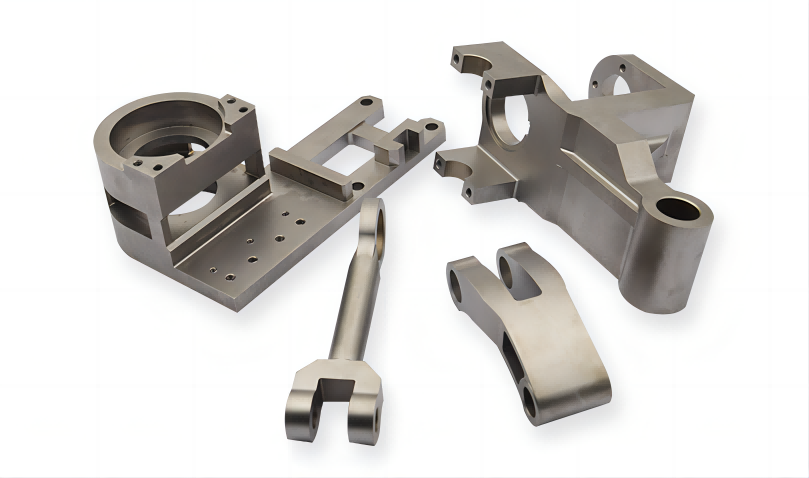
Applicable materials:
Aluminum alloy-6061
Aluminum alloy-5052
Aluminum alloy-7075
Aluminum alloy-2A12
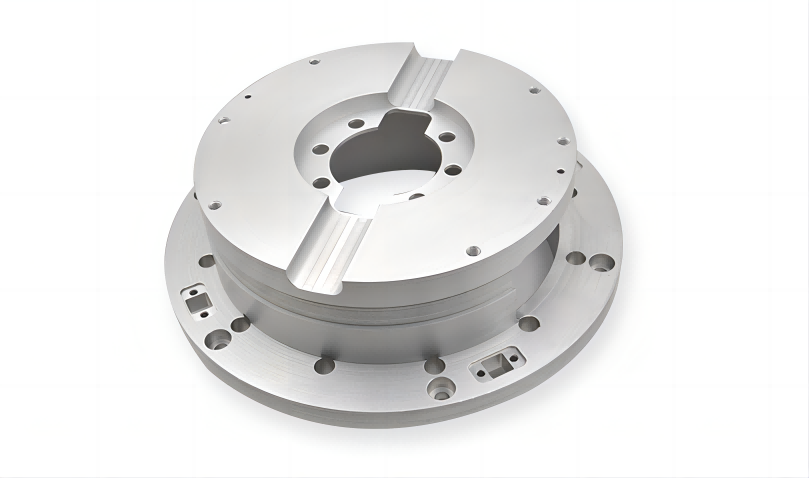
Applicable materials:
Aluminum alloy-6061
Aluminum alloy-5052
Aluminum alloy-7075
Aluminum alloy-2A12
What is the CNC process?
CNC represents "computer digital control", which means that the machine is controlled by a set of commands issued by the controller. The command code issued by the controller is usually in the form of a coordinate list, called the G code. Any machine controlled by such code may be called a CNC machine, including milling machines, lathes and even plasma cutters. In this paper, we will focus on the different types of CNC milling machines and lathes and their combinations. The movement of CNC machines can be defined by their axes, including X axis, Y axis and Z axis, and the more advanced machines also include A axis, B axis and C axis. The X, Y, and Z axes represent the major Cartesian vectors, and the A, B, and C axes represent the rotation of the axis. The CNC machines typically use up to five axes. Typical CNC machines are listed below.
CNC lathe This kind of lathe works by rotating the material in the card tray of the lathe. The tool then moves over the 2 axes to cut out the cylindrical parts. CNC lathe can form curved surface, while manual lathe is difficult or even impossible to form curved surface. Tools that usually do not rotate, but can also move if it is a power tool.
CNC milling machines CNC milling machines are usually used to make flat parts, but more complex machines have more degrees of freedom to produce complex shapes. The material is stationary, and the spindle rotates with the tool, which moves along 3 axis directions to cut the material. In some cases, the spindle is stationary, while the material moves.
CNC drilling This machine is similar to a CNC milling machine, but it is specially designed to cut only in one axis direction, which is only drilled into the material down the Z axis, and never along the X and Y axes.
CNC Grinder This machine allows the grinding wheel to contact the material, produce a high quality surface. It is designed to remove a small amount of material from the hard metal; and is thus used as a surface treatment operation.
Material reduction manufacturing
CNC machining produces parts by reducing materials. This processing basically removes the material from the solid blank and eventually forms the desired shape. It can be accomplished by any of the methods we have mentioned above, such as milling, turning, grinding, or drilling. Additive manufacturing is the opposite process, with adding materials and eventually forming components, such as 3D printing.
tooling
The tooling performs all the cutting work. Instruments are usually mounted on tool racks as needed, or loaded onto the spindle. In the process of making complete parts, many different tools are needed, and there is no universal manufacturing method. The tools commonly used in typical machining are listed below.
Milling tools
Vertical milling cutter is a common tooling and is usually capable of cutting in 3 directions. It is divided into different styles, such as flat head, rounded radius, ball head and cone handle; with different blade numbers, spiral angles, substrate and coating materials.
Face milling cutter A surface milling cutter can be cut on a large surface area, which is forward plane milling. Its cutting edge is usually on the tool edge, and the milling teeth are usually carbide blades.
Thread milling cutter can produce threads by rotating around the wheel shaft to cut out the thread shape.
The cut cutter uses such a cut cutter to form a T groove along the length of the part. Because to the geometry of this tool, it must enter and exit from the opening end of the material.
Tooling materials
As the name suggests, the tooling is designed to cut on the outer diameter of the parts. It may be a solid tooling that process parts into the desired shape or a carbide blade.
These tools are usually relatively thin, and can enter the inside of the parts after drilling, cutting into the inner diameter, or forming threads inside.
The cut tool is used to cut parts after all other operations as the final operation.
Drilling is used to drill in the longitudinal direction of the components, and the holes drilled must be hinged or drilled to achieve the final tolerance.
The tooling materials
The tool type can be further subdivided by the material of the tool itself. The common tooling materials are listed below:
High carbon steel it is the lowest cost of machining tools, the service life is not long. It will lose its hardness at about 200℃ temperature.
High-speed steel (HSS) is more commonly used than carbon steel tools because it lasts longer and loses hardness at 600°C, so it can be cut at a faster speed.
Hardented tools are more rigid than HSS but have less rigidity, and may break if operated improperly. It can tolerate temperatures of up to 900℃.
Ceramic cutting tools are extremely hard and are usually only used to cut hard materials at very high temperatures. It has two common materials, namely, aluminum nitride and silicon nitride.
Cubic boron nitride these tools are ideal for quenched steel and superalloys, with excellent friction resistance and thermal resistance.
The advantages and disadvantages of CNC processing
CNC processing has gradually become mainstream because it is more efficient than manually operated machines. Some advantages and disadvantages of CNC machines are listed below.
| merit | shortcoming |
| Faster than a manual operation | Machines are expensive |
| Manual operation cannot be compared with the CNC machine in terms of speed and accuracy. In mass production environments, the use of manual machines will only result in economic losses | CNC machines are very advanced equipment, with a very high tolerance and rigidity. It allows users to make millions of parts and ensure high quality. But high quality also means high costs; and the more advanced the machine, the higher the cost. |
| Production costs are reduced | Need for highly skilled operators |
| If material loading and unloading is further automated, the CNC machine will be able to operate continuously without human duty. In addition, one operator can operate multiple machines to offset the higher labor costs. | Although the number of operators required is small, CNC machines require highly skilled operators, thus increasing labor costs. |
| Efficiency improvement | Maintenance costs increase |
| The CNC machine can switch from one operation to the next in less than one second. Tool replacement can be done very quickly because some machines have many tools pre-installed on the turret, or there is a tool library to load new tools onto the spindle when needed. | Due to the complexity of CNC machines, their maintenance cost is much higher than that of manual machines. |
| Safety improvement |
Type of CNC milling and turning machines
The CCNC milling machine
Vertical machining Center (VMC) The spindle of the vertical machining center is maintained in the same position and the lathe moves under it. In some cases, the lathe is moved up and in contact with the spindle, or the spindle can be moved up and down along the Z axis. Such machines are highly rigid and therefore able to produce high-precision components. Its disadvantage is that the working area is relatively small. VMC, there may be 3 axes (X, Y, Z), 4 axes (X, Y, Z, A) or even 5 axes (X, Y, Z, A, B).
Horizontal machining center (HMC) HMC machine spindle is horizontal rather than vertical. Such machines are ideal for long-term production because they can process three times as many parts as the VMC with a sufficient work load. HMC is far more expensive than VMC. A piece of material can be fixed to the lathe of the machine while another part is being manufactured. Therefore, continuous production can be achieved, and the spindle can be easily moved to the next piece of material ready and quickly.
CNC lathe
The CNC lathe is capable of machining with only one chuck and two axes. CNC lathes are of the following types:
Ordinary lathe it is basically a kind of standard lathe, relatively common. Its English name included the word "Engine" because such lathes used to be pulley-driven by the engine mounted outside the machine. An ordinary lathe is a lathe with a motor.
The turret lathe can significantly accelerate production because all the required tools have been loaded onto the turret prior to manufacturing. When a new tool is needed, simply rotate to the corresponding position.
Tool room lathe tool room lathe is used for high precision, small batch operation. As the name suggests, this type of lathe is used to make tools and molds. The function of the tool room lathe is also very versatile.
High-speed lathe This kind of lathe is mainly used for light operation, its structure is very simple, including the spindle box, rear seat and knife holder.
CNC lathe center are very advanced, offer a range of functions, including milling and turret tool holders, and even a second spindle. The turning center is also divided into vertical and horizontal types. The horizontal lathe allows falling debris from the parts to enter the chip conveyor, while the vertical lathe allows gravity to help remove the debris when the parts get into the chuck. Vertical lathes are easier to autom. As for which type of lathe is more suitable, it depends on the specific application.
material
CNC machines are capable of handling a variety of materials, from aluminum to superalloys (e. g. conconel). Each material has its own set of challenges, requiring specific tooling, speed, and delivery methods.
aluminium
Since aluminum is a very soft metal, there is a risk of sticking to the cutting tool. In view of the low melting point of aluminum, the appropriate tempering of aluminum to improve the hardness can improve its workability.
carbon steel
Because steel is divided into many grades, many factors will affect the overall processing of the material, such as cold work, chemical composition, microtissue and other factors. In general, elements such as lead and tin can increase the cutting speed, and sulfur can reduce the strain hardening of chips.
titanium
There are many types of titanium alloys, and each of them faces its own challenges. Ideally, the tool must constantly interact with the material, as staying in an area will cause friction, heat accumulation, processing hardening, and tool wear. Pure titanium has properties similar to aluminum and also sticks to cutting tools, but its alloys are usually more rigid and can lead to heat accumulation and tool wear. Low speed and high chip load extend the tool life with lower temperature.
high-temperature alloy
High-temperature alloy has a very high strength at high temperature, so it is difficult to process. To process such materials, more powerful machines are necessary. Superalloys can harden very quickly, making subsequent processing more difficult. It is generally recommended to maintain a low cutting speed.
copper
As we all know, copper is a very difficult material to process, because of its flexibility, often rolled around the tool, and can not be cut. It is mainly used for power components and heat exchanger components that require high electrical conductivity and high heat transfer coefficient. For pure copper, a high-speed feed can usually be used. The processing of copper alloy is much easier compared to pure copper.
plastics
There are thousands of plastics, from thermosetting plastics to ordinary thermoplastics. The hardness and mechanical properties of plastic also vary greatly. Only rigid plastics can be processed well, and kept within the tolerance range, while soft plastics often deform when passing through cutting tools, resulting in the external size of components do not meet the specifications. Because plastic is an insulator, heat often accumulates at the cutting edge, and it will melt if it is not careful.
What problems may arise?
Although CNC machines have a lot of uses and functions, there are some risks. Some frequent errors in CNC processing are listed below.
CNC system crash The CNC machine does not think for itself; it will only follow human instructions. If not programmed correctly, the machine may allow the cutting tool to cut to itself in a millisecond. The machine usually detects a system crash and stops running, but at this time may have caused damage. There are multiple software tools available to help reduce such risks. You can simulate the tool operation path before uploading the code to the machine. Using standard computer-assisted manufacturing (CAM) software, it is difficult to simulate complex 5-axis machines, using other software in the process between the CAM code writing and uploading code to the machine.
Improper speed and feed speed and feed are essential to the production of high-quality machining components. If the wrong setting is used, tool wear and surface handling and tolerances will not be accelerated. The correct setting of speed and feed is a complex theme because each material and its alloy require different settings to achieve the desired cutting effect. To achieve a reasonable setting, it usually requires several attempts.
Lack of maintenance Like any complex machine, a lack of maintenance causes the CNC machine to damage quickly. The machine must be kept clean and strictly follow the OEM maintenance schedule.
Major industries that use CNC technology
Any industry involved in component production will be directly or indirectly affected by CNC processing. Some of the major industries using CNC processing are listed below.
Aerospace Aerospace requires components with high precision and repeatable capabilities, including turbine blades in engines, tooling for other components, and even combustion chambers used in rocket engines.
Automotive and machine manufacturing The automotive industry needs to manufacture high-precision molds for casting parts (e. g. engine seats) or for processing high-tolerance parts (e. g. pistons). The gantry machine can cast clay modules for use in the design phase of the car.
The military industry uses high-precision components with strict tolerance requirements, including missile components, gun barrel, etc. All the machined components in the military industry can benefit from the accuracy and speed of the CNC machines.
Medical implant devices are usually designed to fit the shape of human organs and must be made with advanced alloy. Since no manual machine can generate such shapes, the CNC machine becomes a necessity.
The energy and energy industry covers all engineering fields, from steam turbines to cutting-edge nuclear fusion technologies. The steam turbine requires high precision turbine blades to maintain balance in the turbine, and the shape of R & amp in fusion; D plasma suppression cavity is very complex, manufactured from advanced materials and requires the support of CNC machines.
Current trends in CNC technology
With the accelerated pace of science and technology development in recent years, we feel additive manufacturing will become the mainstream of CNC processing, but more likely to appear more and more emerging manufacturing center will be a variety of technology combination to a machine, so as to make full use of the advantages of reducing material and additive manufacturing machine, develop function stronger than the sum of the two machines. Early applications of such machines have already emerged.
In addition, through the fourth Industrial Revolution, automation has made great strides, and more automated systems will be developed, capable of self-diagnosis and self-chemical optimization, requiring little human intervention. In the future, products are expected to be manufactured according to the individual requirements of consumers, and CNC machines with excellent flexibility can make this vision a reality.
Our hours
Mon 11/21 - Wed 11/23: 9 AM - 8 PM
Thu 11/24: closed - Happy Thanksgiving!
Fri 11/25: 8 AM - 10 PM
Sat 11/26 - Sun 11/27: 10 AM - 9 PM
(all hours are Eastern Time)